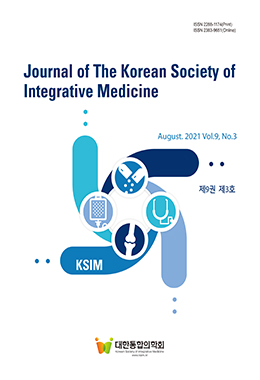Purpose : It was to compare changes in respiratory function (pulmonary function, inspiratory function) after four weeks of inspiratory muscle strengthening training (diaphragmatic breathing with upper arm exercise, Power-Breathe breathing) for 36 healthy people.
Methods : Subjects were randomly assigned to diaphragmatic breathing with upper arm exercise (Group Ⅰ) and Power-breathe breathing (Group Ⅱ) was conducted by the protocol for four weeks five times per week. As the main measurement method for comparison between groups For pulmonary function, Forced Vital Capacity (FVC) and Forced Expiratory Volume at One second (FEV1) were used, and for inspiratory function, Maximum Inspiratory Capacity (MIC), Maximum Inspiratory Pressure (MIP), and Maximum Inspiratory Flow Rate (MIFR) were used.
Results : In changes in pulmonary function between groups, FVC and FEV1 showed no significant difference, and in inspiratory function changes, MIC showed no significant difference, but in MIP and MIFR, Group B significantly improved over Group A.
Conclusion : The progressive resistance training using the Power-breath device applied to the inspiratory muscle did not show a significant difference in the increase in the amount of air in the lungs and chest cage compared to the diaphragmatic breathing training accompanied by the upper arm exercise. However, by increasing the air inflow rate and pressure, it showed a more excellent effect on improving respiratory function.




